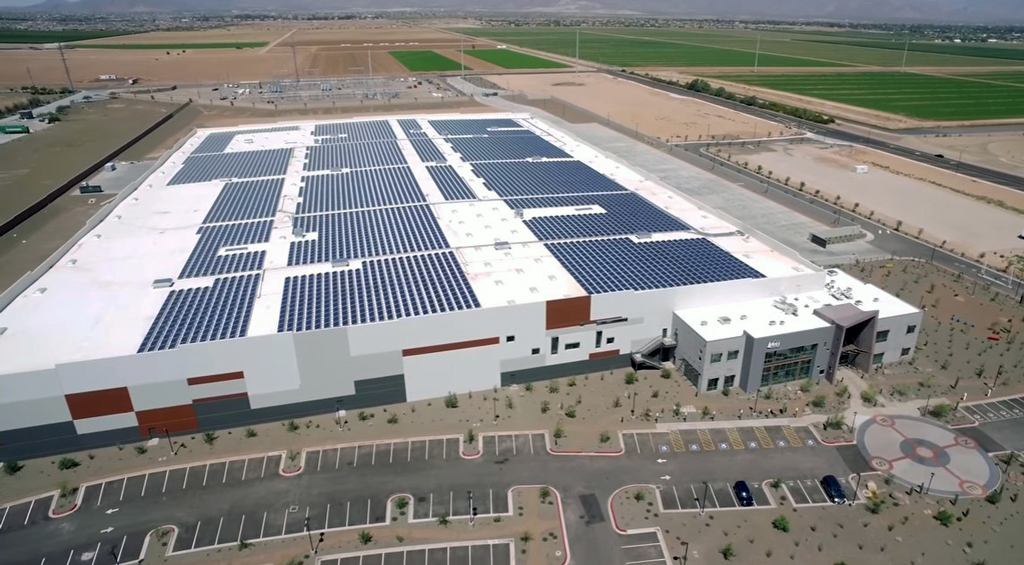We recently opened our newest distribution center in Goodyear, Arizona, that will support more than 40 percent of the co-op’s sales. It’s one of the most sustainable distribution centers in the world, producing all of its own energy and taking an innovative approach to water conservation. So next time you receive your gear, know that we are thoughtful about processing and shipping it in the most sustainable, efficient way.
Back in 1938, REI founders Lloyd and Mary Anderson began selling outdoor gear at a gas station in Seattle. Since then, the co-op has grown into a community of more than 6 million members with nearly 150 stores throughout the country. With this growth, we have continued to face new challenges in getting gear to our stores, members and customers while reducing our environmental impacts.
As a co-op focused on the outdoors, it’s no surprise that we think long-term about how to responsibly operate our business. When we identified the need for a third distribution center—which opened this past summer—we approached it as an opportunity to improve energy efficiency, limit our impact on natural resources and make a more comfortable workplace for our employees.
We began this project 18 months ago by challenging our partners to think creatively about how to achieve our ambitious goal of building one of the world’s most sustainable distribution centers, and in the heat of the desert. Given the size of the facility and around-the-clock operations, distribution centers typically use massive amounts of energy.
We took a different approach and committed to making sure the building produced all of its own energy. This thinking resulted in a 280,000-square-foot rooftop solar array that produces 2.2 megawatts of electricity—enough to power the entire facility and making the building Net Zero Energy. We are also pursuing LEED Platinum, the highest rating from the U.S. Green Building Council, which looks at how buildings are planned, constructed, maintained and operated.
In addition to energy consumption, water conservation was also an important consideration throughout the design and construction process—even more important since the building is located in the Arizona desert. We found a variety of ways to save water on-site, including a non-evaporative cooling system that keeps the building at a consistent temperature from floor to ceiling while saving millions of gallons of water annually.
But we wanted to do more to offset the facility’s water footprint, so we invested in a river restoration project in the Verde Valley, high in the Phoenix watershed. Thanks to the work of Bonneville Environmental Foundation and The Nature Conservancy, this project restores river habitat, modernizes irrigation infrastructure, limits development and new water extraction in critical areas, funds stewardship projects and enhances recreational access along the river.
We know that distribution center operations are not top of mind for many customers, and most companies focus on more public efforts, such as sustainable products and storefronts—which we do as well. But we focus on sustainability in all aspects of our business and feel that distribution centers are often a missed opportunity to massively decrease environmental impacts.
- The 2.2 megawatt solar array produces enough energy to power the entire facility. REI determined the size of the array through early energy modeling, which ensured it would power all operations throughout the building while saving roof space for skylights to be strategically placed over workstations.
- REI partnered with KNAPP and DMW&H to integrate technologies into an innovative workstation, allowing one person to process items eight times faster than the typical distribution center.
- A trail system surrounds the building so that employees can enjoy the botanical garden, which features native plants and drip irrigation to minimize water consumption.
- The co-op built this facility with employees in mind by offering on-site perks including a gym, physical therapist, café, botanical garden, bike storage and air conditioning to beat the Arizona heat.






